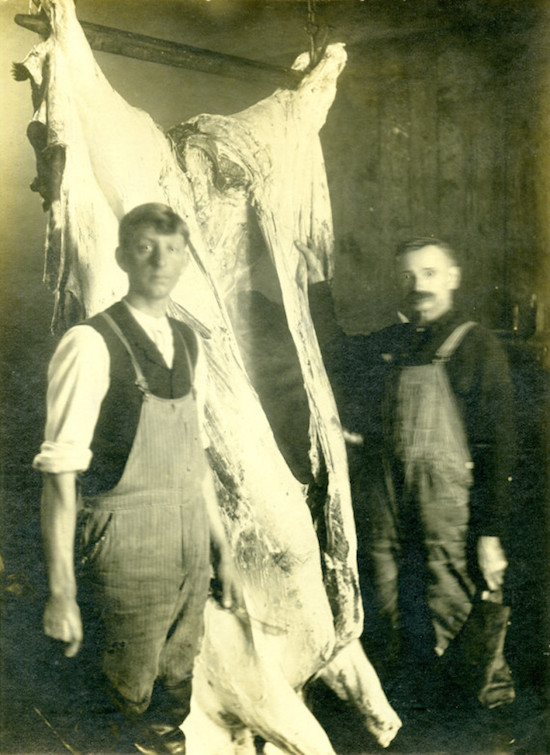
From the Unger Family collection, c. 1915, gelatin silver print (UL#1228) | Image from presentationhousegallery.org
Today, Metro Vancouver is a bustling metropolis of 2.5 million people: one of the world’s most livable cities and a place where open land is in short supply, if the current real estate boom is any indication.
Go back about a century or so, however, and things were a little different. A new photography exhibition is offering a rare glimpse into Vancouver from 1860-1920, a period when the fledgling settlement clung hazardously to the coast, surrounded by the vast, wild forests all around it.
The Nanitch exhibition, on display now at the Presentation House Gallery, is pulled from an incredible archive of more than 18,000 rarely seen photographs recently donated to the UBC Library by philanthropists Uno and Dianne Langmann. Images range from old postcards to hand-coloured prints, glass negatives and even stereo cards (the “virtual reality” 3D images of the day).
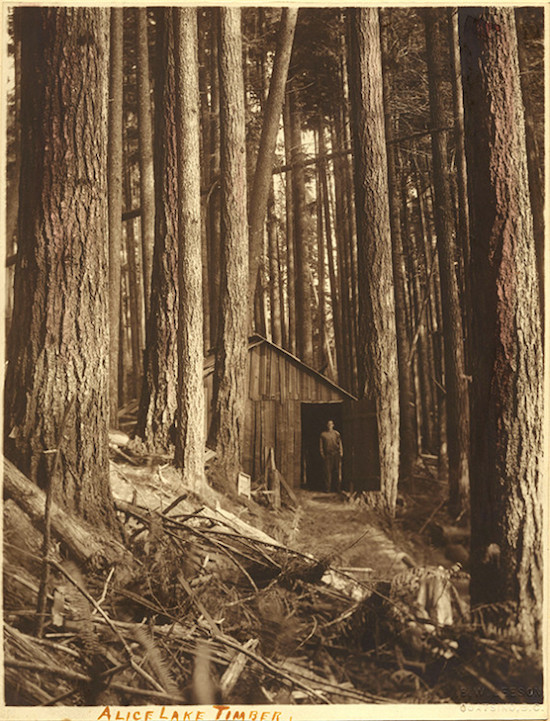
Ben W. Leeson, “Alice Lake Timber,” c.1890, hand-tinted gelatin silver print (UL#1079) | Image from presentationhousegallery.org
The exhibition conveys a powerful impression of how raw, rough and isolated Vancouver and British Columbia were not too long ago. In one photo titled Alice Lake Timber, a man stares out from a rough wood cabin in dense forest, hard to make out amid so many towering trees. Another photo titled Views of British Columbia shows a wooden shack perched on a spit of land extending into the water, backed by dark and brooding forest.
Collectively, the photos challenge the dominant narrative of settlers coming in and triumphantly taming the wilderness. While there are many images of commerce and industry, as well as family portraits of the city’s elite, just as many images catalog the difficult, even dystopian conditions of early British Columbia. Other photos show in grim light the challenges faced by indigenous people and the displacement they suffered – a harsh contrast to the promotional photos from early government expeditions and utopian communities that were popping up.
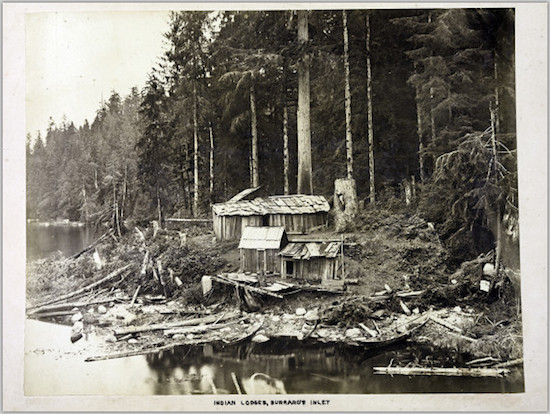
Frederick Dally, from “Views of British Columbia” album, 1867-1868, albumen print (UL#1001) | Image from presentationhousegallery.org
Photo buffs can also get a sense of the evolving technology used at the time. Starting in the late 1800s, bulky, large-format cameras were slowly being replaced by amateur cameras, which ushered in a new era of commercial photography. In fact, widely distributed postcards and cartes de visite played an important role in promoting British Columbia to the rest of the world, hastening the region’s colonization. The key role of the camera is suggested by the exhibition’s title, Nanitch, meaning “to look” in Chinook – the creole trade language of the era.
Nanitch is on display through June 26 at the Presentation House Gallery in North Vancouver. Key photographers highlighted in the exhibition include Frederick Dally, Charles Horetzky, Charles McMunn, Hannah and Richard Maynard, Ben Leeson, and Edward Curtis.












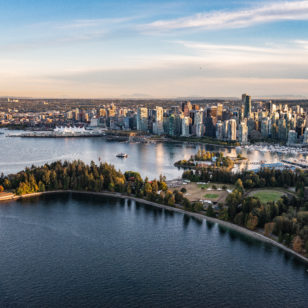


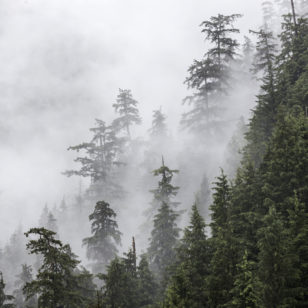

Pingback: Rare Photographs of Vancouver from 1860-1920 Revealed in New Exhibition – Gunboat Bay Lodge